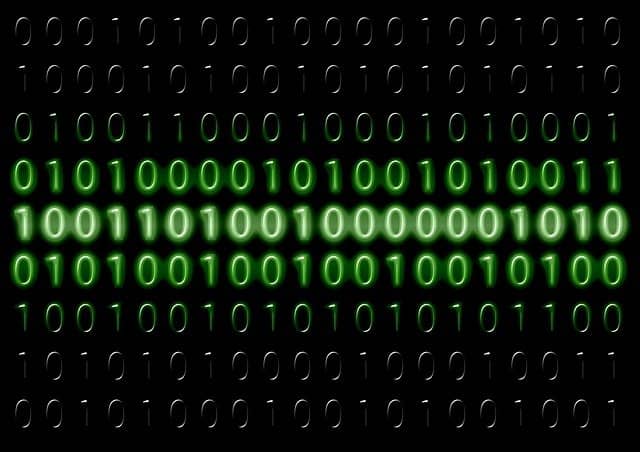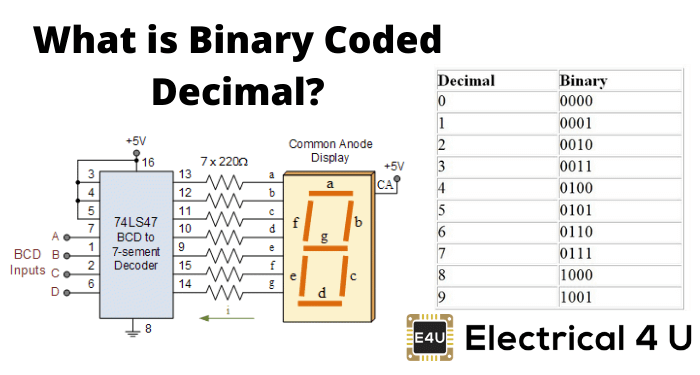What is Binary System? Conversion Methods, Benefits, and Applications

The binary system is a number system composed of two different values, one or zero. It makes the calculation of digital information faster in computers and other electronic systems. This system has been used for hundreds of years and is employed in everyday electronic and computer devices. It is the most common way to store and transfer information between digital devices. It works by converting the two different numbers into a single easily duplicable code.
WHAT IS BINARY SYSTEM AND EXAMPLES
WHAT IS THE BINARY SYSTEM?
To understand what the binary system is, you must first know that each byte represents a value between 0 and one. A byte in the binary system has 8 digits, and each digit is represented by a character. The system is based on the ASCII chart, which assigns a character to each byte. For example, a single digit can represent a number up to 255.
The binary system is a very useful mathematical tool because it allows representing numbers in two mutually exclusive states. Almost all modern computers use this system. It was developed at the beginning of the 20th century by John Atanasoff, a physics professor at Iowa State College. In 1932, Raymond Louis Andre Valtat patented the first binary calculator. The fundamental advantage of this system is its simplicity. Also, it allows very fast calculation.

The binary numerical system is a popular alternative to the decimal numbering system (base 10). Its two-digit format is similar to the English language, but it uses powers of two instead of ten. In fact, all computer programs and languages use the binary numerical system. It simplifies the process of designing computers and related technologies because it uses two digits, 0 and 1. The following computer lesson explains how to convert a decimal number into a binary one.
The basic system that initiates all numbering systems is the binary system. We are used to counting using the decimal system, but this one originates from the binary system and is also used by computers.
While the decimal system 0,1,2,3,4,5,6,7,8,9 is based on 10 digits and with these, we can write any amount in numbers.
You will learn it very quickly!
EXAMPLES OF THE BINARY SYSTEM
This system, as its name "Bi" suggests, refers to the use of only two digits for counting, which are zero and one (0 and 1), what is called base 2.
It is easy to understand when we want to count something tangible, for example, apples:
- If we do not have an apple, then we write a "0".
- If we have an apple, we would write "1"
- If we have two apples, we would normally use the number two, but as we now only have 0 and 1, then we would need one more digit, so we move one to the left, resulting in the expression "10" in base 2.
In the same way, we can do it with any system. Let's learn how easy it is!
HOW TO CONVERT A DECIMAL BASE NUMBER TO ANY BASE X?
If we have any decimal base number, and we want to convert it to another base "X", it is much faster than it seems because we only have to divide the whole part as many times as until it is less than "X", noting the remainders in reverse order, from the last to the first.
HOW TO CONVERT A DECIMAL BASE NUMBER TO ANY BINARY BASE OR BASE TWO?
In a few words, any number we have to divide as many times between two "2" until we have a number less than 2 and we are noting the remainders that have been left to us, ordering them in reverse.
Examples of conversion to binary base
- Convert 2 to binary base:
2 divided by 2 results in the whole part 1 and leaves us 0, and since the whole part "1" is already less than the base "2", we would stop the divisions. We would write from the last remainder to the first, in reverse order, resulting in the expression "10" in base 2.
- Convert 3 to binary base:
The number 3 divided by 2 results in the whole part 1 and leaves us 1, and since the whole part "1" is already less than the base "3", we would stop the divisions. We would write the remainders from the last to the first, resulting in the expression "11" in base 2.
- Convert 4 to binary base:
The number 4 divided by 2 results in the whole part 2 and leaves us 0, and since the whole part "2" can continue to be divided by 2, then as 2 divided by 2 results in 1 leaving "0".
Since the last integer was 1 and it is less than the base "4", we would stop the divisions; and we write the remainders from the last to the first, resulting in the expression "100" in base 2.
More Examples of conversions:
Let's see some of the conversions from the decimal system (which we use daily) to the binary system:
0 <> 0
1 <> 1
2 <> 10
3 <> 11
4 <> 100
5 <> 101
6 <> 110
7 <> 111
8 <> 1000
9 <> 1001
10 <> 1010
11 <> 1011
12 <> 1100
13 <> 1101
14 <> 1110
15 <> 1111
...
- Let's convert the number 28 to base two:
28/2=14 and remains 0
14/2=7 and remains 0
7/2=3 remaining 1
3/2=1
resulting :
28=1100(10)

Convert from binary system to decimal
First understand that operations start from right to left,
We take the digits of the binary number from right to left and we multiply each one by 2 raised to the power according to its position decreased by one, that is, it would start from zero.
- we will take the binary number 10110 to learn:
10110(2)=0*20+1*21+1*22+0*23+1*2410110(2)=0+2+4+0+1610110(2)=22(10)
- Let's see another example converting the number 111111 to the decimal system:
111110(2)=0*20+1*21+1*22+1*23+1*24+1*25111110(2)=0+2+4+8+16+32111110(2)=62(10)
Applications of the binary system in computing
- The binary numeral system is widely used in the computer industry. It is an extremely flexible, efficient, and easy-to-read representation. It is also useful for converting from binary to decimal, which is not as easy as it might be. Additionally, a binary number can be reversed to obtain the opposite sign, so a different number can be reversed and used. It is a very powerful method for solving puzzles, and it is also an excellent choice for storing millions of numbers.
- The binary numeral system was originally developed for use in a telegraph system. It works well for encrypting messages. It is also used to encode signals through a telegraph system. In this way, it can be translated into a single electrical impulse. This system is fundamental for electronics and computing. It can also help with encryption. It is easy to use. There are several applications of the binary system in computing.
- It can be used to encode a message. On the computer, it is useful for encryption. It can also be used for communications. For example, the telegraph system is based on the binary code to translate a message. It is important to note that the binary system can also be used in the telegraph system. If a binary code is encrypted, it can be sent over the Internet in less time.
Advantages of the Binary System
- The binary system is easier to use in electronic devices. It requires fewer calculations and mistakes. As it only has two digits, it is easy to write. A single digit can represent eight figures. As it only has two occurrences in each digit, it can be shortened to an even shorter number. Being the only form of calculation, it only uses one type of byte. Therefore, it is more versatile than the decimal system.
- In addition to being more efficient, the binary system can also be safer. Besides being faster, it will allow you to save money. You will be able to store more information on a computer. Also, it will prevent errors from occurring when storing data in the wrong place. Therefore, it is worth investing in a new machine and learning how it works. The advantages of the binary numerical system in computing are numerous.
- It is also more comfortable to work with than other systems. Its dual nature makes it suitable for a wide variety of tasks. It can help communicate with other people and store millions of files. In addition, it can facilitate computer maintenance. The advantages of the binary system in computing cannot be exaggerated. These systems are the backbone of modern technology. They make it possible for us to be connected worldwide and help the world keep running.
See more:
